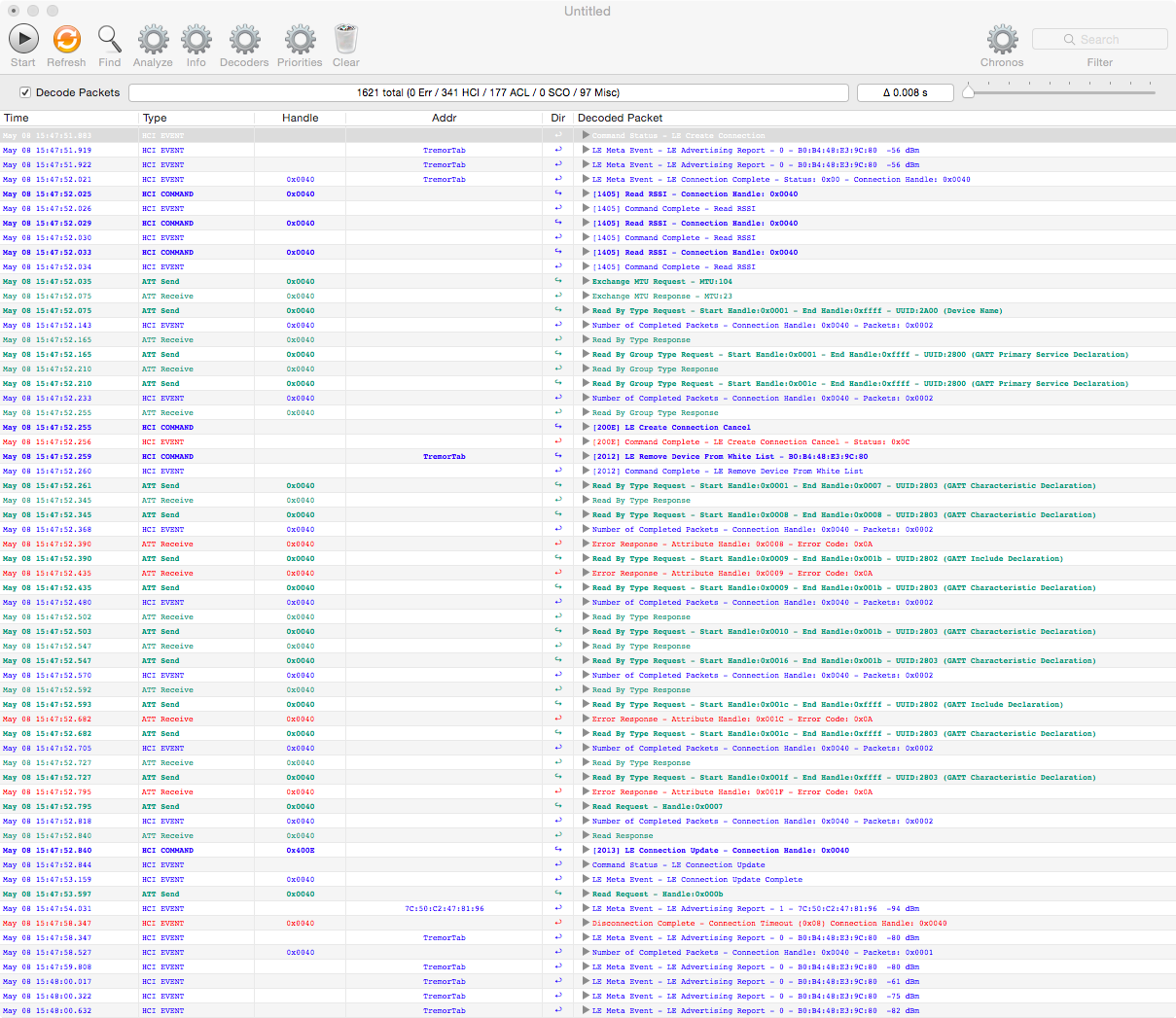Hello,
I have developed a custom board based on the 4x4 CC2650 chip using BLE (with the antenna taken from the SensorTag reference design, and the remainder of the circuitry taken from the uTag reference design). The antenna is operating in single ended mode.
Starting from the SimpleBLEPeripheral project, I have written custom firmware and used the debugger on the CC2650 Launchpad to program my board via CCS.
The issue I am having is that using all the default settings in the SimpleBLEPeripheral project, my device boots up and I can connect to it via an iPhone 6 (either using TI's multitool app, or LightBlue Explorer). I can subscribe to notifications and read them perfectly.
However, when using a Macbook Air, the connection drops after 7 seconds every time with the error code - 0x08.
If I flash the same program (with diff board file) to the LaunchPad, both the laptop and the phone can connect?
Has anybody experienced a similar issue before? I am assuming it could be down to the hardware - but if it were, I would expect it to fail when used to connect to the phone too.
(I currently don't have access to a spectrum analyser)
Kind regards,
Christian


